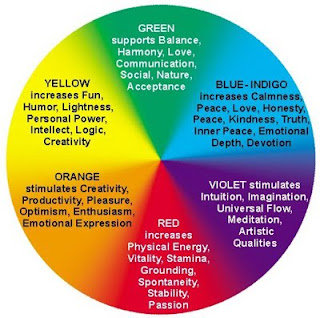
OK, so by now, you have survived creating your design budget. The next step is to identify how you want to feel in the space and what activities you want to be able to do in the space. For example, is it a space that needs to calm you (i.e.; bedroom, sun room?), or energize you (i.e.; work-out room?) Does it need to inspire you creatively (i.e.; craft room, music room?), or keep you grounded and focused (i.e.; home office?)
Ask yourself, "How do I want to feel when I walk into this space?"
The answer to that question will help you select your color scheme and textures. If you want to feel calm and tranquil, you will want to stay in the blues and purples. If you want to feel energized; yellows, oranges and reds. If you want to feel a sense of balance and comfort, then go with earth tones (greens and browns.)
Next, we need to identify the activities that need to take place in the space. Make a list of all the things that NEED to be able to happen in the space, and then a list of the extra activities that WOULD BE NICE if they could be accommodated in the space. Here are some questions to get you started:
Do I need a surface for studying, or cooking? How many separate surfaces will be used at the same time for different tasks? Do I need a storage space for toys, books, supplies, extra blankets/pillows? How many people need to be able to sit in this space at once? Do I need extra task lighting? Do I need to minimize sound? Do I need a lot of natural light? Do I need to be able to achieve complete darkness?
So, once you identify the desired FEEL of the space and the activities that need to be accommodated in the space, then we get to the fun stuff; pulling together furniture and fixtures, colors, and concepts. See you at the next posting - this is going to get crazy...







